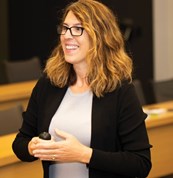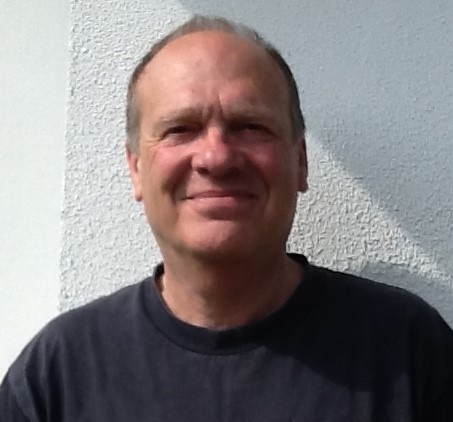- Innovation
Innovation Readiness for the New Normal
Rotman School of Management’s Dr. Angèle Beausoleil on how to navigate barriers and stimulate the innovation needed to survive and thrive

“Acknowledging that our barriers to innovation are self-imposed is the crux,” begins Angèle Beausoleil, the Academic Director of the Business Design Initiative at Rotman School of Management. “Then we can identify them and find ways to remove them, or to reduce them, or navigate around them.”
Innovation Readiness for a New Normal, the online program she will be leading on 11-12 June, will start by using a self-assessment tool to shed light on these self-imposed barriers to innovation. The short online course will then objectively explore individual issues and barriers that are commonly shared within organizations, before introducing new ideas around how to adapt to business challenges through innovation.
………………………………………………………………………………………………………………………
Innovation Readiness for a New Normal: A Real-Time Virtual Experience
Dates: 11-12 June 2020 │ Format: Online
…………………………………………………………………………………………………………………….
Dr. Beausoleil encourages us to avoid the almost reflexive association we tend to make between the words ‘innovation’ and ‘organizations’, and the placing of innovation in a part of our world far removed to our personal lives. Think of the innovation we have made in our lives to accommodate working remotely from home, for example.
There are of course some barriers that are imposed upon us. Today it is social distancing. Then there are the classic barriers of ‘resources’ and ‘money’—but Dr. Beausoleil thinks these are often used as scapegoats. A bigger barrier is our ability to think ahead. “We make the mistake of only acting upon ‘what we know today’. As opposed to asking the questions: what do we need to know? —what should we actually explore? —and what don't we know?”
Innovation is a communication process because it's a dialogue. It's a dialogue all the way through—internal stakeholders; external stakeholders; customers; to sales; to frontline service employees; etc.
Dr. Beausoleil is wary of benchmarking, which tends to limit our creative thinking by merely focusing on past experience. “Why use competitor benchmarks when the only benchmark we could ever judge ourselves against are our own?” she cautions. “I apply that to innovation readiness too. What are your benchmarks? What are you starting with?”
“The key to mapping out an innovation development process is the idea that every organization thinks that they are starting at the same point—and in reality, they are not,” she adds. Typically, an organization will have started their innovation initiative halfway through another process, introducing what they believe to be an innovation, but which can in fact too often be more accurately described as ‘a solution that's looking for a problem’.
A true innovation may require the level of permission it takes to actually stop the presses, take a pause, and asking: Are we solving the right problem? How did we get here? Where are we now? And, where do we need to be for this journey to be completed as we hope it to be—with prosperity, impact, and profits? “Making the difficult decision to take a genuine pause is critical,” says Dr. Beausoleil.
When it comes to introducing innovation readiness into a team, and across an organization, leaders will of course be confronted with the self-imposed barriers of a lot of separate individuals. “The appetite and motivation for innovation varies within every individual, within every team. Within every organization you find varying levels of desire, want or fear,” asserts Dr. Beausoleil. “What we need is to identify what those are so we can seek alignment.”
Alignment is essential, and here Dr. Beausoleil makes an important observation: “Too many times in my research and working with organizations, I have seen how we tend to misinterpret alignment with decisions being made by committee or ‘forging toward consensus’. This idea that if we get everyone to comply before we can then move forward.” This is a big mistake. There will always be resistors that will never come along, as well as those that are very keen and way ahead of the pack but who fail to consider their teammates or the importance of organizational alignment.
The way to create true alignment is to have a customer-first mindset. Years of research show that customer-minded organizations are the ones that survive and prosper. To align teams and individuals it is important to remember who we are actually serving says Dr. Beausoleil, “to remember that we can best serve customers by being aligned in terms of what we're all trying to do.”
We tend to misinterpret alignment with decisions being made by committee or ‘forging toward consensus’
By aligning the culture, an appetite for innovation can be stimulated across the organization—in a way it never will be by trying to get everybody to sit down in a committee and formally agree step-by-step what to do. Not everyone needs to actively participate in the innovation process. “For any organization to survive and thrive,” says Dr. Beausoleil, “there has to be this constant understanding that we're going to evolve.”
The COVID-19 crisis has arrived at a time where organizations were already being faced with an urgent need to change—to adapt to the coming of AI, machine learning, and digital transformation. “A shock is often the catalyst for change,” says Dr. Beausoleil. “This crisis has forced even resistors to have a new relationship with technology. And at the same time, it's also accentuating our need for human sensing and integrating human and technology combinations.”
I'm excited about how we're going to navigate this new normal,” concludes Dr. Beausoleil. From embracing technology to preparing teams and organizations with the innovation readiness they need to prosper right now. “We need to pass our appreciation of these elements on to those that resist. We need to ask; how can we make their experience more useful, desirable and beautiful, and less about resistance?”
“Innovation is a communication process because it's a dialogue. It's a dialogue all the way through—internal stakeholders; external stakeholders; customers; to sales; to frontline service employees; etc.” says Dr. Beausoleil—and acknowledging this is more relevant today than ever.
Angèle Beausoleil and colleagues discuss Innovation Readiness in this recent webinar: https://youtu.be/ABhOYbavs4w
Rotman School of Management is Canada’s leading business school and has Canada’s largest group of management faculty. It is home to some of the most innovative research institutes in the world
ARTICLES YOU MIGHT LIKE
VIEWPOINT
Cognitive neuroscientist, Lynda Shaw, explains how to understand and support intrapreneurs
DEVELOPING LEADERS QUARTERLY MAGAZINE AND WEEKLY BRIEFING EMAILS


































